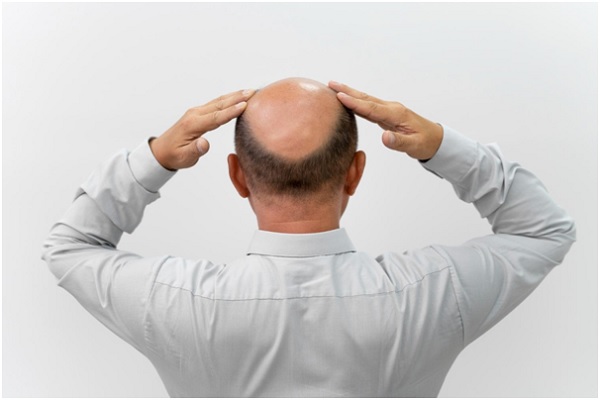
Male pattern baldness, or androgenetic alopecia, may result from genetics or a scalp infection or skin disorder. Various treatment options are available to slow hair loss or stimulate hair growth. A person can discuss these treatments with their doctor. In some cases, it may be possible to preventor at least slow down hair loss. However, this will depend on the underlying cause of a person’s hair loss. People may not be able to slow or prevent some types of hair loss. In these cases, males can try active treatment methods. Over-the-counter (OTC) medications are available that may help treat hair loss. These include foams and ointments.
The two most common medications are minoxidil (Rogaine) and finasteride (Propecia):
Minoxidil: Scientists originally developed trusted Source minoxidil to treat high blood pressure. The developers found that the medication had the side effect of excessive, unwanted hair growth. This effect gave drug companies a reason to consider it as a treatment for male baldness. Researchers do not know trusted sources exactly how minoxidil works.
Minoxidil
The drug appears to widen the hair follicles, which causes thicker strands of hair to grow. In addition, minoxidil appears to prolong the growth period of hair, resulting in longer hair and a higher number of hair strands. Minoxidil is a safe trusted Source and effective when people use it properly. It is more effective in individuals who are under 40 years of age. The FDA trusted Source notes that the term “off-label” refers to approved medications that doctors prescribe for unapproved uses. Minoxidil is not suitable for people who are pregnant or nursing or for those who have a hypersensitivity to the medication’s ingredients. It comes in 5% and 10% strengths.
Finasteride
Finasteride is an FDA-approved treatment for male pattern baldness. Scientists created finasteride to treat prostate cancer. It works by decreasing trusted Source the amount of the hormone dihydrotestosterone (DHT) in the scalp. DHT appears to cause trusted Source hair follicles on the scalp to become thinner, so reducing DHT levels may promote hair regrowth and slow hair loss. This drug carries several warnings about its use. It is suitable only for adult males and is not suitable for people who are pregnant or nursing. Unlike minoxidil, finasteride does not affect hair growth in other parts of the body.
Platelet-rich plasma (PRP)
PRP is a newer treatment that doctors use for androgenetic alopecia. It involves a doctor taking a blood sample and running it through a centrifuge machine. This machine separates the PRP in the blood so the doctor can extract the platelets and inject them into specific areas of a person’s scalp. The platelets may promote healing in damaged hair follicles.
Surgery
The only surgery available to address hair loss is hair transplant surgery. Hair transplantation is for people with male pattern baldness. A hair transplant involves removing hair follicles from the back of the head, where they are resistant to DHT, and placing them on the scalp.
Laser treatment
Laser treatments, such as combs, are a newer form of hair loss treatment. Advocates claim that these devices promote hair growth by using concentrated light to stimulate hair follicles
Hair growth products
Therapies for hair loss often involve a combination of drugs, ointments, creams, and shampoos, which a dermatologist may prescribe. Several companies specialize in hair treatments for men. They typically offer services to help work out the best course of action and tailor treatments to an individual’s needs.

